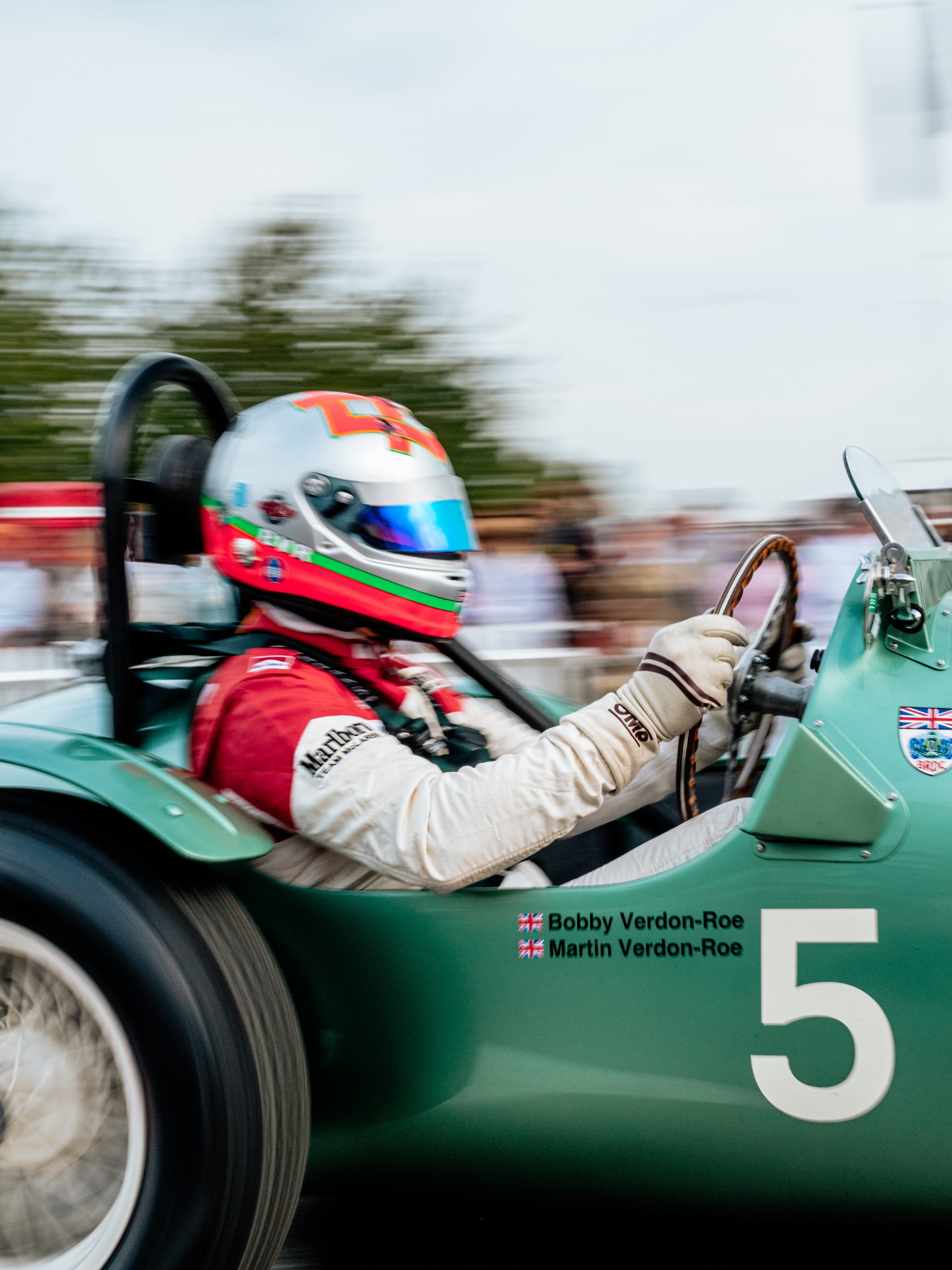Remembering Jack Brabham: Part 1 – The Goodwood History
As we build up to the Revival Meeting’s 50th anniversary celebrations of 1966, the year in which Jack Brabham won the F1 world title in a car bearing his own name, we pay tribute to the pioneering Australian driver/engineer, starting with a look back at his strong connections with Goodwood.

It didn’t begin well.
That’s an understatement. It could hardly have been worse.
He’d sold up, travelled halfway round the world – a four-day trip aboard thrumming turboprops – and left his young family behind to drive this heap.
Wooed by stories of British racing sophistication, Sydney’s Jack Brabham had been persuaded to buy a 2-litre single-seat Cooper-Alta from Jaguar’s 1951 Le Mans winner Peter Whitehead; it had a twin-cam for heaven’s sake.
But he was to be sorely disappointed and would rue the day that he’d sold his well-developed and successful Cooper-Bristol – it had a humble pushrod don’t you know – to fund his dream.
His ‘new’ machine was unreliable and unwieldy and ran out of fuel three laps before the finish of Easter Monday Goodwood’s Richmond & Glover Trophy in April 1955; Brabham didn’t shed a tear when it refused to restart after the resultant pitstop.
His British debut had him dicing for a distant fourth place with fellow Cooper-Alta driver Mike Keen. Not what he had hoped for.

But for the fact that he had gladly received twice the expected start money and some free methanol from Esso – Shell turned him away when he baulked at signing a contract – the weekend would have been a bust.
His mood improved a few days later when he read that Autosport had picked him out as a ‘presser-onner’.
Plus he had come too far to fail.
Ten years later, by now a two-time world champion, he completed 25 look-see laps in his Brabham-Repco – first of the new 3-litre Formula 1 cars to turn a wheel at Goodwood – before shipping it to South Africa to launch the most successful season of a storied career.
This racer/engineer, who all but invented set-up, had between times completed many thousands of such exploratory laps at this airfield perimeter circuit: the first run of the lengthened Cooper Bobtail that gave him his GP debut at Aintree in July 1955 – and good reason to stay in Britain; the chat that led Cooper to beef up its Formula 2 car and step up in 1957; and the shakedown of the first F1 Brabham – “it handled beautifully” – in mid-1962.
There were races at Goodwood, too – and wins, of course.

A “bar room brawl” of a lead dice with Graham Hill’s Lotus in the F2 Lavant Cup of 1958, resolved by a do-or-die move at Woodcote.
“Jack came by me with all four wheels on the grass,” wrote Hill in Life at the Limit. ”Straight across my bows, off the track, on the other side.
“I had backed right off the throttle thinking there was going to be the most almighty shunt…
“A typical Brabham carve-up… that deservedly paid off.”
But there were days when Stirling Moss – as a Cooper rival or Aston Martin team-mate – ‘Salvo’, Tony Brooks, Archie Scott Brown – a rare outing for Jack in a Tojeiro-Jaguar – and Mike Hawthorn were that little bit better on.
No shame in that.
A narrow defeat to the Race Proved by Willment Ford Galaxie of Aussie newcomer Brian Muir at the 1966 St Mary’s Trophy was, however, a surprise – the enforced fitting moments before the start of an unscrubbed rear tyre causing Jack’s pole-sitting Mustang some unsettling moments that cost it several places during the early laps.

And there were shunts, too, of course.
Among them the loudest when Alan Brown’s Galaxie – two tons of fun on straining Dunlops – suffered a front puncture and hit the Madgwick bank during practice for the 1964 St Mary’s Trophy.
‘The vast American car rolled over and over with a crashing and banging, the like of which had never before been heard on the West Sussex circuit,’ reported Motor Sport. ‘It finished up on its wheels rather the worse for wear and Brabham undid his safety harness and stepped out unmarked.’ He appeared completely unfazed. More than can be said for several ashen-faced spectators.
And then there was the big one at the 1999 Revival, a backwards impact in the McCaw Collection’s McLaren M5A-BRM that landed him in hospital overnight for the first time in his career: a bang on the bonce, bust ribs and bruised lungs.
The final occasion remains the only race for 3-litre F1s at Goodwood. Fifty years ago it banned them, fearful of their speed, and the track’s final international race, the Sunday Mirror Trophy, was held for 1-litre F2s instead. Denny Hulme’s Brabham-Honda set pole and fastest lap, but it was his boss who took the victory – the first of many that season.
The year 1966 was one in which Brabham became a triple world champion – the first driver to take the title in a car bearing his own name – and won no fewer than 10 F2 races in Europe. It was also the year that Goodwood’s original iteration closed its doors to the public.
The testing continued in private, of course – and the Jack Brabham legacy grew: racing sons Geoff, Gary and David all had their first UK taste of a racing car at Goodwood.
From heap to neat.
Images courtesy of The GP Library and LAT
Jack brabham
Revival
Revival 2016
2016






























































